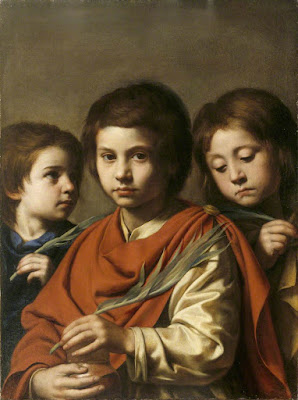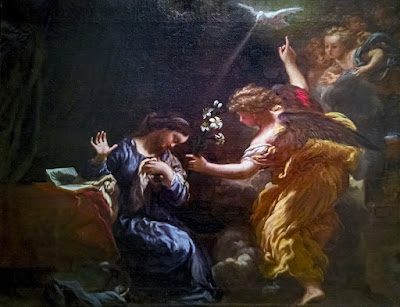 |
| attributed to Giovanni Antonio Galli (Lo Spadarino) Three Boy Martyrs before 1652 oil on canvas National Trust, Attingham Park, Shropshire |
 |
| Giovanni Antonio Galli (Lo Spadarino) Baptism of Constantine before 1652 oil on canvas Fondazione Musei Senesi |
 |
| Giovanni Antonio Galli (Lo Spadarino) Christ and the Woman taken in Adultery before 1652 oil on canvas Museo di Castelvecchio, Verona |
 |
| Giovanni Antonio Galli (Lo Spadarino) Feast of the Gods before 1652 oil on canvas Galleria degli Uffizi, Florence |
 |
| Giovanni Antonio Galli (Lo Spadarino) Guardian Angel before 1652 oil on canvas Chiesa di San Rufo, Rieti |
 |
| Giovanni Antonio Galli (Lo Spadarino) Penitent Magdalen ca. 1625-35 oil on canvas Walters Art Museum, Baltimore |
 |
| Giovanni Antonio Galli (Lo Spadarino) St Frances of Rome with an Angel before 1652 oil on canvas Palazzo Rosso, Genoa |
 |
| Giovanni Antonio Galli (Lo Spadarino) St Frances of Rome with an Angel before 1652 oil on canvas Banco Nazionale del Lavoro, Rome |
"Spadarino's most typical and strikingly modern feature is that of human fragility and vulnerability. It distinguishes him from all of Caravaggio's other followers and from the master himself, who was dramatic and severe, monumental and rigorous, with stronger and more decided feelings."
– Gianni Papi, Between God and Man: Angels in Italian Art (Jackson: Mississippi Museum of Art, 2007)
 |
| Livio Mehus The Annunciation before 1691 oil on canvas Pinacoteca Egidio Martini, Ca' Rezzonico, Venice |
 |
| Livio Mehus Annunciation to the Shepherds ca. 1670-80 oil on canvas Palazzo Pretorio, Prato |
 |
| Livio Mehus Annunciation to the Shepherds (detail) ca. 1670-80 oil on canvas Palazzo Pretorio, Prato |
 |
| Livio Mehus Landscape with Seaside Village ca. 1670-80 oil on canvas Palazzo Pretorio, Prato |
 |
| Livio Mehus The Genius of Painting (Self-Portrait) ca. 1650 oil on canvas Museo del Prado, Madrid |
 |
| Livio Mehus The Genius of Sculpture (Self-Portrait) ca. 1650 oil on canvas Palazzo Pitti, Florence |
 |
| Livio Mehus Battle between Greeks and Trojans ca. 1670 oil on canvas private collection |
"At the age of fourteen Livio Mehus, born in Flanders, was already documented in Rome. The greater part of his career, however, was centered in Florence. He settled there in the service of the Medici, executing original works for them in fresco and on canvas, as well as undertaking restorations of many earlier masterpieces in their collections."
– from curator's notes at Museo del Prado, Madrid